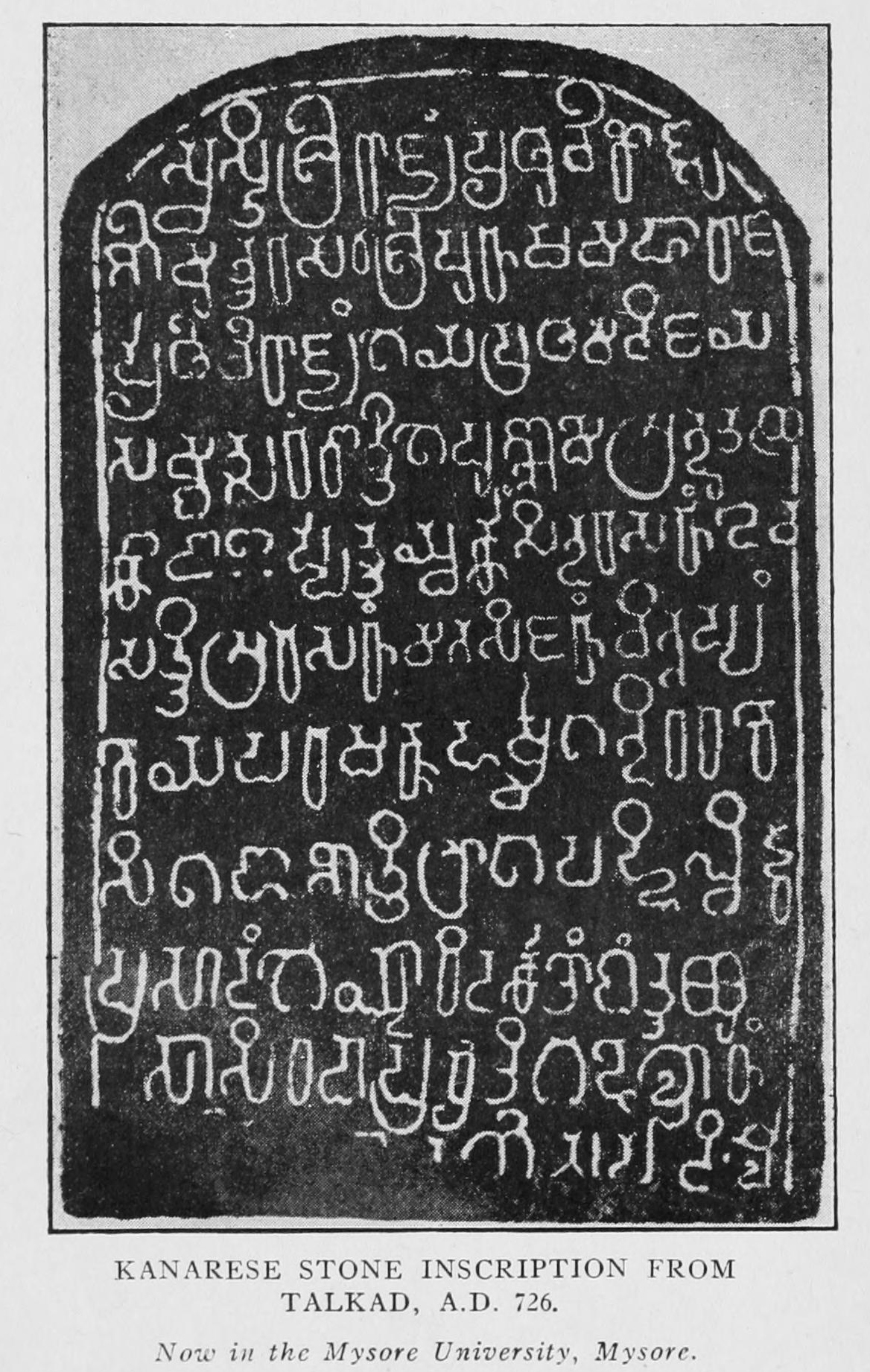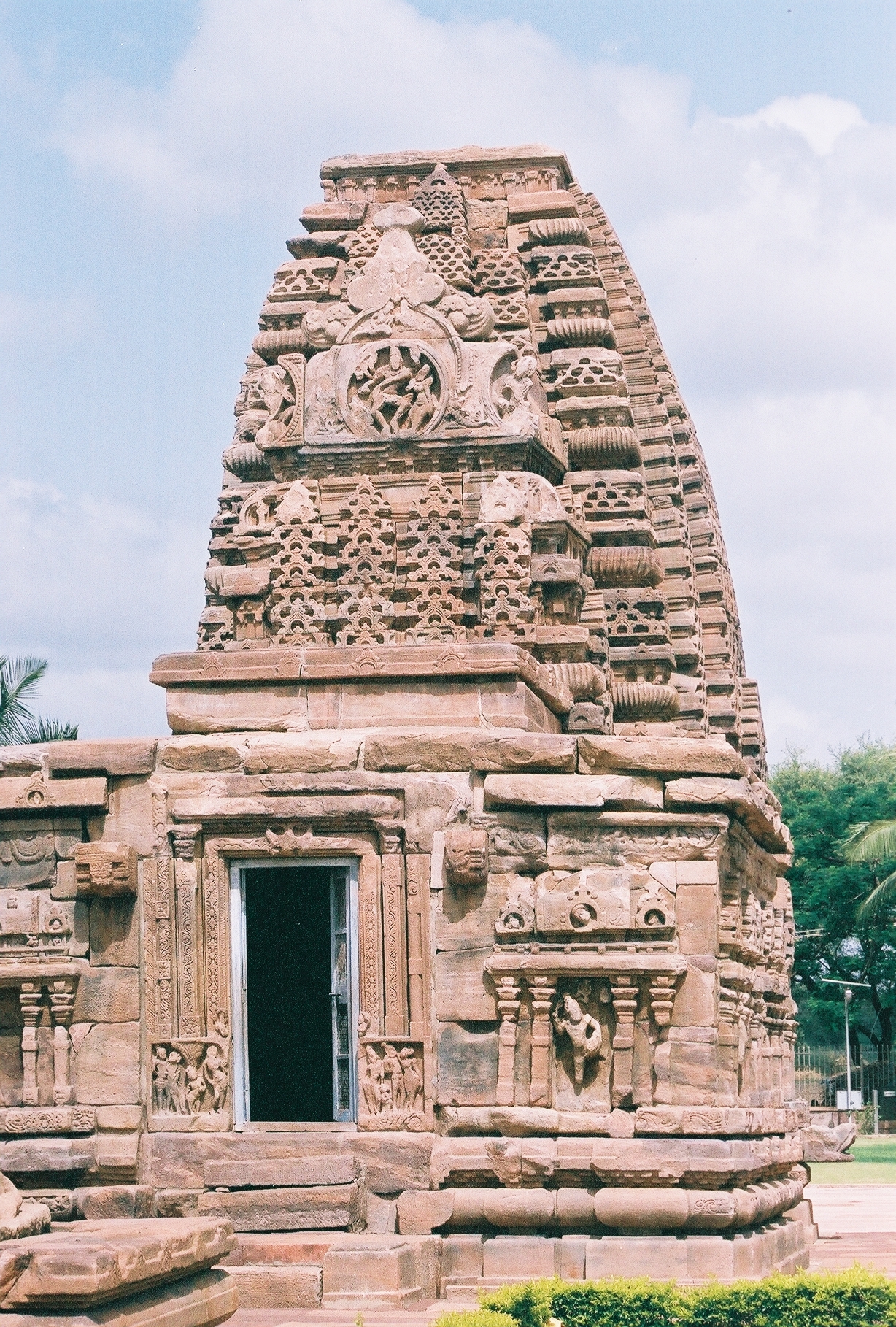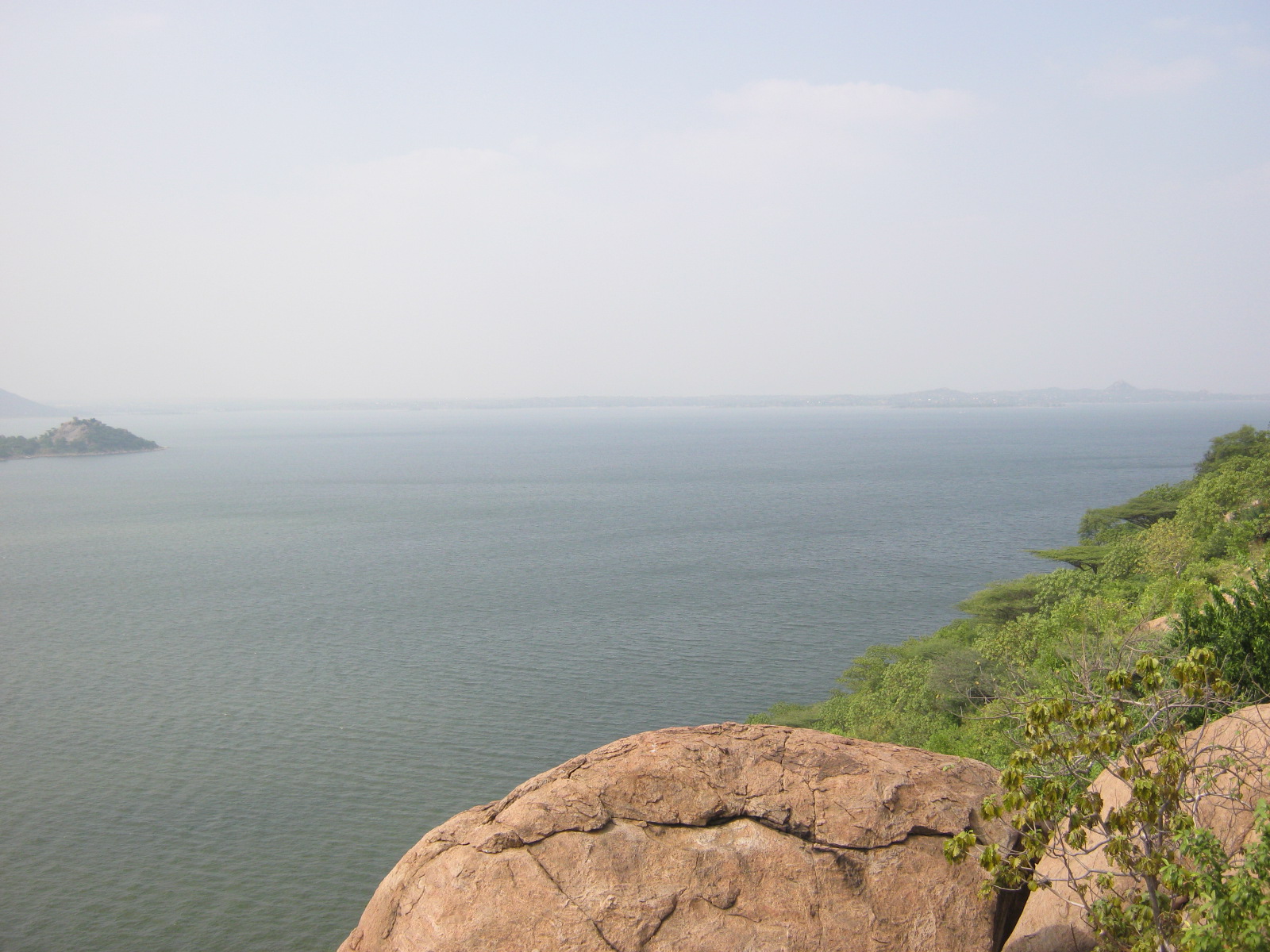|
Western Ganga Dynasty
Western Ganga was an important ruling dynasty of ancient Karnataka in India which lasted from about 350 to 999 CE. They are known as "Western Gangas" to distinguish them from the Eastern Ganga Dynasty, Eastern Gangas who in later centuries ruled over Kalinga (historical region), Kalinga (modern Odisha and Northern Andhra Pradesh). The general belief is that the Western Gangas began their rule during a time when multiple native clans asserted their freedom due to the weakening of the Pallava empire in South India, a geo-political event sometimes attributed to the southern conquests of Samudra Gupta. The Western Ganga sovereignty lasted from about 350 to 550 CE, initially ruling from Kolar, Karnataka, Kolar and later, moving their capital to Talakadu on the banks of the Kaveri River in modern Mysore district. After the rise of the imperial Chalukya dynasty, Chalukyas of Badami, the Gangas accepted Chalukya overlordship and fought for the cause of their overlords against the Pal ... [...More Info...] [...Related Items...] OR: [Wikipedia] [Google] [Baidu] |
Pallava Dynasty
The Pallava dynasty existed from 275 CE to 897 CE, ruling a significant portion of the Deccan, also known as Tondaimandalam. The Pallavas played a crucial role in shaping in particular southern Indian history and heritage. The dynasty rose to prominence after the downfall of the Satavahana Empire, whom they had formerly served as feudatories. The Pallavas became a major southern Indian power during the reign of Mahendravarman I (600–630 CE) and Narasimhavarman I (630–668 CE), and dominated the southern Telugu region and the northern parts of the Tamil region for about 600 years, until the end of the 9th century. Throughout their reign, they remained in constant conflict with both the Chalukyas of Vatapi to the north, and the Tamil kingdoms of Chola and Pandyas to their south. The Pallavas were finally defeated by the Chola ruler Aditya I in the 9th century CE. The Pallavas are most noted for their patronage of Hindu Vaishnava temple architecture, the fine ... [...More Info...] [...Related Items...] OR: [Wikipedia] [Google] [Baidu] |
Pallava
The Pallava dynasty existed from 275 CE to 897 CE, ruling a significant portion of South India, the Deccan, also known as Tondaimandalam. The Pallavas played a crucial role in shaping in particular southern Indian history and heritage. The dynasty rose to prominence after the downfall of the Satavahanas, Satavahana Empire, whom they had formerly served as feudatories. The Pallavas became a major South India, southern Indian power during the reign of Mahendravarman I (600–630 CE) and Narasimhavarman I (630–668 CE), and dominated the southern Andhra Pradesh, Telugu region and the northern parts of the Ancient Tamil country, Tamil region for about 600 years, until the end of the 9th century. Throughout their reign, they remained in constant conflict with both the Chalukyas of Badami, Vatapi to the north, and the Tamil kingdoms of Chola Dynasty, Chola and Pandyas to their south. The Pallavas were finally defeated by the Chola ruler Aditya I in the 9th century CE. The Pallav ... [...More Info...] [...Related Items...] OR: [Wikipedia] [Google] [Baidu] |
Kaveri
The Kaveri (also known as Cauvery) is a Rivers of India, major river flowing across Southern India. It is the third largest river in the region after Godavari River, Godavari and Krishna River, Krishna. The catchment area of the Kaveri basin is estimated to be and encompasses the states of Tamil Nadu, Karnataka, Kerala, and the union territory of Puducherry (union territory), Puducherry. The river rises at Talakaveri in the Brahmagiri (hill), Karnataka, Brahmagiri range in the Western Ghats. The source is located at an elevation of in the Kodagu district of Karnataka. The river flows for about through the Deccan plateau in Karnataka before entering Tamil Nadu. It flows further eastward in Tamil Nadu for before flowing into the Bay of Bengal near Puhar, Mayiladuthurai, Poompuhar in Mayiladuthurai district of Tamil Nadu. The river flows for a total length of about . The major tributaries include Amaravati River, Amaravati, Arkavati, Bhavani River, Bhavani, Hemavati River, He ... [...More Info...] [...Related Items...] OR: [Wikipedia] [Google] [Baidu] |
Tanjavur
Thanjavur (), also known as Thanjai, previously known as Tanjore, Pletcher 2010, p. 195 is a city in the Indian state of Tamil Nadu. It is the 12th biggest city in Tamil Nadu. Thanjavur is an important center of southern Indian religion, art, and architecture. Most of the Great Living Chola Temples, which are UNESCO World Heritage Monuments, are located in and around Thanjavur. The foremost among these, the Brihadisvara Temple, built by the Chola emperor Rajaraja I, is located in the centre of the city. This temple has one of the largest bull statues (called Nandi) in India carved out of a single granite rock. Thanjavur is also home to Tanjore painting, a painting style unique to the region. Thanjavur is the headquarters of the Thanjavur District. The city is an important agricultural centre located in the Kaveri Delta and is known as the ''Rice bowl of Tamil Nadu''. Thanjavur is administered by a municipal corporation covering an area of and had a population of 222,943. R ... [...More Info...] [...Related Items...] OR: [Wikipedia] [Google] [Baidu] |
Chola Dynasty
The Chola dynasty () was a Tamil dynasty originating from Southern India. At its height, it ruled over the Chola Empire, an expansive maritime empire. The earliest datable references to the Chola are from inscriptions dated to the 3rd century BCE during the reign of Ashoka of the Maurya Empire. The Chola empire was at its peak and achieved imperialism under the Medieval Cholas in the mid-9th century CE. As one of the Three Crowned Kings of Tamilakam, along with the Chera and Pandya, the dynasty continued to govern over varying territories until the 13th century CE. The heartland of the Cholas was the fertile valley of the Kaveri River. They ruled a significantly larger area at the height of their power from the latter half of the 9th century till the beginning of the 13th century. They unified peninsular India south of the Tungabhadra River and held the territory as one state for three centuries between 907 and 1215 CE. K. A. Nilakanta Sastri, ''A History of South In ... [...More Info...] [...Related Items...] OR: [Wikipedia] [Google] [Baidu] |
Deccan Plateau
The Deccan is a plateau extending over an area of and occupies the majority of the Indian peninsula. It stretches from the Satpura Range, Satpura and Vindhya Ranges in the north to the northern fringes of Tamil Nadu in the south. It is bound by the mountain ranges of the Western Ghats and the Eastern Ghats on the sides, which separate the region from the Western Coastal Plains, Western and Eastern Coastal Plains respectively. It covers most of the Indian States of Maharashtra, Karnataka, Telangana and Andhra Pradesh excluding the coastal regions, and minor portions of Tamil Nadu and Kerala. The plateau is marked by rocky terrain with an average elevation of about . It is subdivided into Maharashtra Plateau, Karnataka Plateau, and Rayalaseema & Telangana Plateau. The Deccan Traps in the north west were formed by multiple layers of igneous rocks laid down by basaltic lava flows following a massive volcanic eruption that occurred during the end of the Cretaceous period (66 Millio ... [...More Info...] [...Related Items...] OR: [Wikipedia] [Google] [Baidu] |
Rashtrakuta Dynasty
The Rashtrakuta Empire was a royal Indian polity ruling large parts of the Indian subcontinent between the 6th and 10th centuries. The earliest known Rashtrakuta inscription is a 7th-century copper plate grant detailing their rule from Manapur, a city in Central or West India. Other ruling Rashtrakuta clans from the same period mentioned in inscriptions were the kings of Achalapur and the rulers of Kannauj. Several controversies exist regarding the origin of these early Rashtrakutas, their native homeland and their language. The Elichpur clan was a feudatory of the Badami Chalukyas, and during the rule of Dantidurga, it overthrew Chalukya Kirtivarman II and went on to build an empire with the Gulbarga region in modern Karnataka as its base. This clan came to be known as the Rashtrakutas of Manyakheta, rising to power in South India in 753 AD. At the same time the Pala dynasty of Bengal and the Prathihara dynasty of Gurjaratra were gaining force in eastern and northwe ... [...More Info...] [...Related Items...] OR: [Wikipedia] [Google] [Baidu] |
Kanchi
Kanchipuram (IAST: '; ), also known as Kanjeevaram, is a stand alone city corporation, satellite nodal city of Chennai in the Indian state of Tamil Nadu in the Tondaimandalam region, from Chennaithe capital of Tamil Nadu. Known as the ''City of Thousand Temples'', Kanchipuram is known for its temple architectures, 1000-pillared halls, huge temple towers and silk saris. Kanchipuram serves as one of the most important inland tourist destinations in India. Kanchipuram has become a centre of attraction for foreign tourists as well. The city covers an area of and an estimated population of 232,816 in 2011. It is the administrative headquarters of Kanchipuram District. Kanchipuram is well-connected by road and rail. Kanchipuram is a Tamil name formed by combining two words, " kanchi" and "puram," together meaning "the city of kaanchi flowers" (due to the abundance of kaanchi flowers in those regions). The city is located on the banks of the Vegavathy and Palar Rivers. Kanchipur ... [...More Info...] [...Related Items...] OR: [Wikipedia] [Google] [Baidu] |
Pallavas
The Pallava dynasty existed from 275 CE to 897 CE, ruling a significant portion of the Deccan, also known as Tondaimandalam. The Pallavas played a crucial role in shaping in particular southern Indian history and heritage. The dynasty rose to prominence after the downfall of the Satavahana Empire, whom they had formerly served as feudatories. The Pallavas became a major southern Indian power during the reign of Mahendravarman I (600–630 CE) and Narasimhavarman I (630–668 CE), and dominated the southern Telugu region and the northern parts of the Tamil region for about 600 years, until the end of the 9th century. Throughout their reign, they remained in constant conflict with both the Chalukyas of Vatapi to the north, and the Tamil kingdoms of Chola and Pandyas to their south. The Pallavas were finally defeated by the Chola ruler Aditya I in the 9th century CE. The Pallavas are most noted for their patronage of Hindu Vaishnava temple architecture, the finest examp ... [...More Info...] [...Related Items...] OR: [Wikipedia] [Google] [Baidu] |
Chalukya Dynasty
The Chalukya dynasty () was a Classical Indian dynasty that ruled large parts of south India, southern and central India between the 6th and the 12th centuries. During this period, they ruled as three related yet individual dynasties. The earliest dynasty, known as the "Badami Chalukyas", ruled from Vatapi (modern Badami) from the middle of the 6th century. The Badami Chalukyas began to assert their independence at the decline of the Kadamba Dynasty, Kadamba kingdom of Banavasi and rapidly rose to prominence during the reign of Pulakeshin II. After the death of Pulakeshin II, the Eastern Chalukyas became an independent kingdom in the eastern Deccan Plateau, Deccan. They ruled from Vengi until about the 11th century. In the western Deccan, the rise of the Rashtrakutas in the middle of the 8th century eclipsed the Chalukyas of Badami before being revived by their descendants, the Western Chalukyas, in the late 10th century. These Western Chalukyas ruled from Kalyani (mo ... [...More Info...] [...Related Items...] OR: [Wikipedia] [Google] [Baidu] |
Kaveri River
The Kaveri (also known as Cauvery) is a major river flowing across Southern India. It is the third largest river in the region after Godavari and Krishna. The catchment area of the Kaveri basin is estimated to be and encompasses the states of Tamil Nadu, Karnataka, Kerala, and the union territory of Puducherry. The river rises at Talakaveri in the Brahmagiri range in the Western Ghats. The source is located at an elevation of in the Kodagu district of Karnataka. The river flows for about through the Deccan plateau in Karnataka before entering Tamil Nadu. It flows further eastward in Tamil Nadu for before flowing into the Bay of Bengal near Poompuhar in Mayiladuthurai district of Tamil Nadu. The river flows for a total length of about . The major tributaries include Amaravati, Arkavati, Bhavani, Hemavati, Kabini, Lakshmana Tirtha, and Noyyal. There are a number of dams on the river which form part of an extensive irrigation system and are used for the generation ... [...More Info...] [...Related Items...] OR: [Wikipedia] [Google] [Baidu] |











